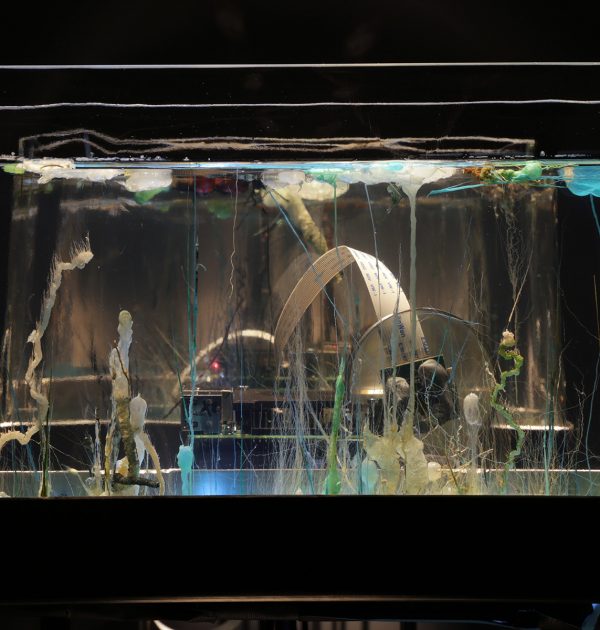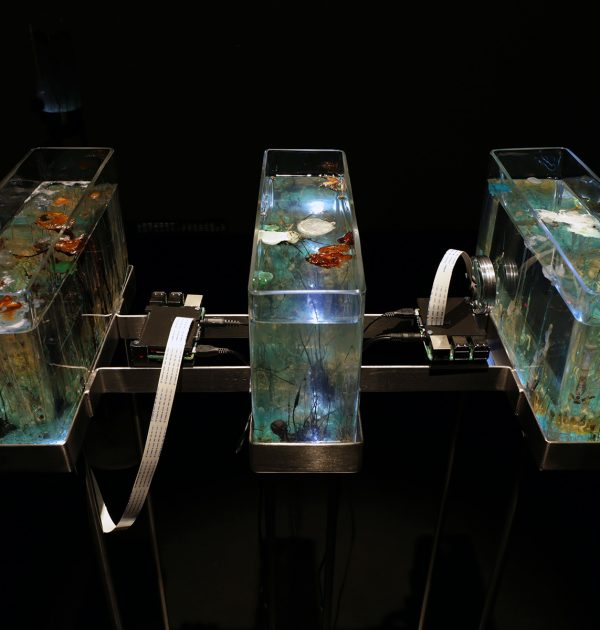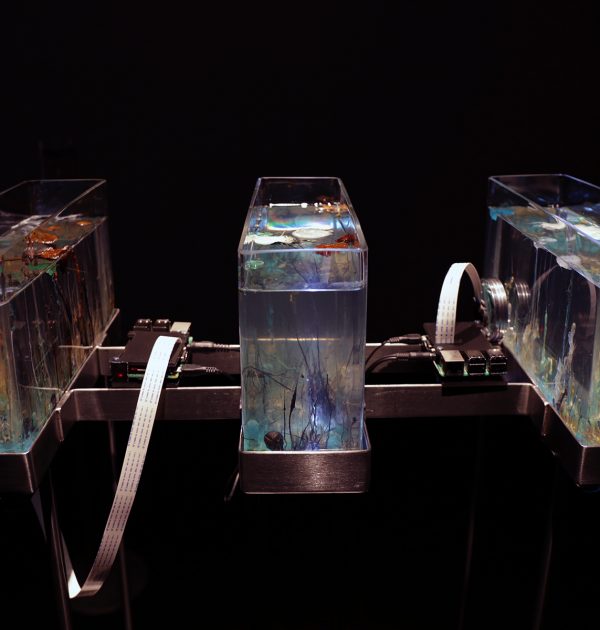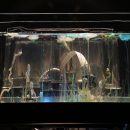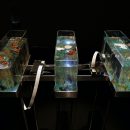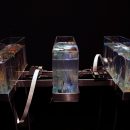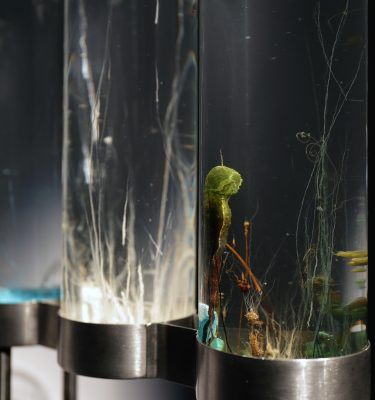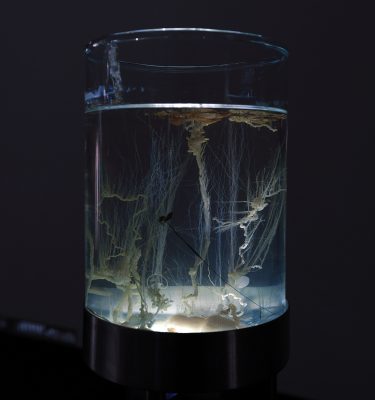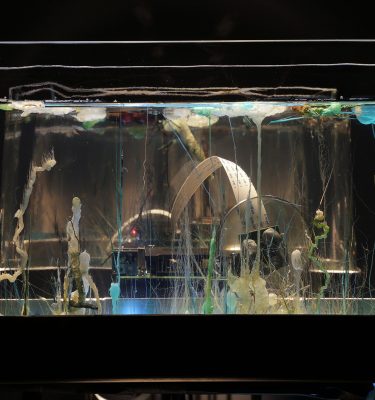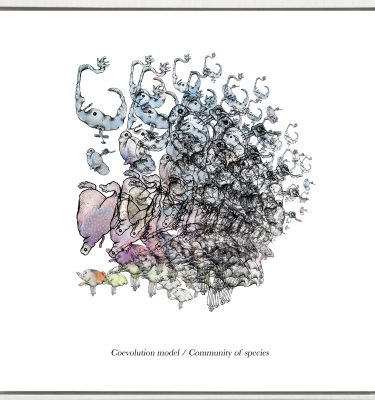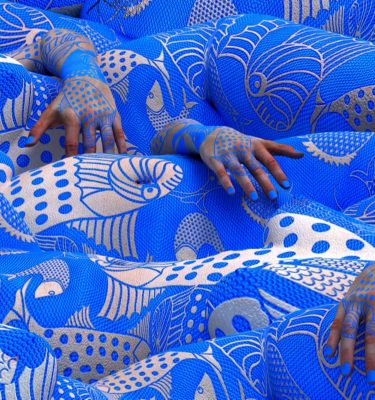“In crystal we have a pure evidence of the existence of a formative life principle, and although in spite of everything we cannot understand the life of crystals – it is still a living being.” (Nikola Tesla, 1900)
The colorful biomimetic morphologies of chemical gardens are a fascinating imitation of life. Key to these marvelous structures, which spent decades locked away in an alchemist’s cabinet of curiosities, is a renewed study of chemobrionics, a field combining chemistry, physics, biology, and materials science. Chemobrionics denotes self-propagation, the growth of chemical structures with a tendency to increase concentration gradients under conditions of osmotic pressure and buoyancy. Scientists are on a new quest to find in these abiotic formations the root of biotic protocells. Therefore, in the last few centuries, chemical gardens have progressed from being counterfeit to being original; from childlike imitations of life to the sheer origin of life on Earth. Time Displacement is a durational performance which uses chemical gardens as stained glass windows to explore the optics that change the cultural perception of the world and the practice of differentiating between organic and inorganic matter. This changed perception of matter is made possible by means of interdisciplinary research, which contributes to a more holistic understanding of (geological, chemical, social, political) processes in the world. Although not a new notion, chemical gardens are only now emerging as an unexpected research area and a prime example in chemistry of self-organizing non-equilibrium processes that create complex structures, combining chemistry, fluid dynamics, and materials science. If research in the field of chemobrionics is legitimated by the development of new materials for commercial purposes, Time Displacement encourages such study of materials, which maintains a fascination with the potential development of nanomaterials without any commercial implications. A durational performance in an open laboratory, Time Displacement takes the viewpoint of the history of science to talk about findings which are not just a result of meticulous research, but also a product of the cultural environment. Used also a starting point for chemical-acoustic live experiments, the installation will be comprised of several small chemical garden formations in a water glass (sodium silicate) solution, to provide an insight into research on the origin of life and on chemical processes, which unfold at a pace that is rapid, yet still too slow to be discernible to the naked eye.
The chemical reactions, where visible changes take between 8 and 48 hours, will be monitored by cameras to detect changes in color and in shape by means of a microcontroller. The changes will affect the code for live sound generation, and will slowly work to alter the harmony pervading the gallery space. A sound art installation which goes beyond the human perception of time calls for a perspective that considers the multiple dimensions of temporal rhythms in space.
More by Robertina Sebjanic, Ales Hieng – Zergon and Ida Hirsenfelder
-
Time Displacement / Chemobrionic Garden No.2 (TD/CG No. 2)
€ 6000,00 Excl. Taxes Robertina Sebjanic, Ales Hieng & Ida Hirsenfelder
-
Time Displacement / Chemobrionic Garden, the installation
€ 11500,00 Excl. Taxes Robertina Sebjanic, Ales Hieng & Ida Hirsenfelder
-
Time Displacement / Chemobrionic Garden No.1 (TD/CG No. 1)
€ 7000,00 Excl. Taxes Robertina Sebjanic, Ales Hieng & Ida Hirsenfelder

